Cognitive biases can significantly hinder personal growth by distorting perception and decision-making. This article explores key biases like confirmation bias and the Dunning-Kruger effect, examines their universal and unique attributes, and discusses strategies to overcome them. Understanding these biases fosters self-awareness and promotes better decision-making, ultimately leading to meaningful personal development.
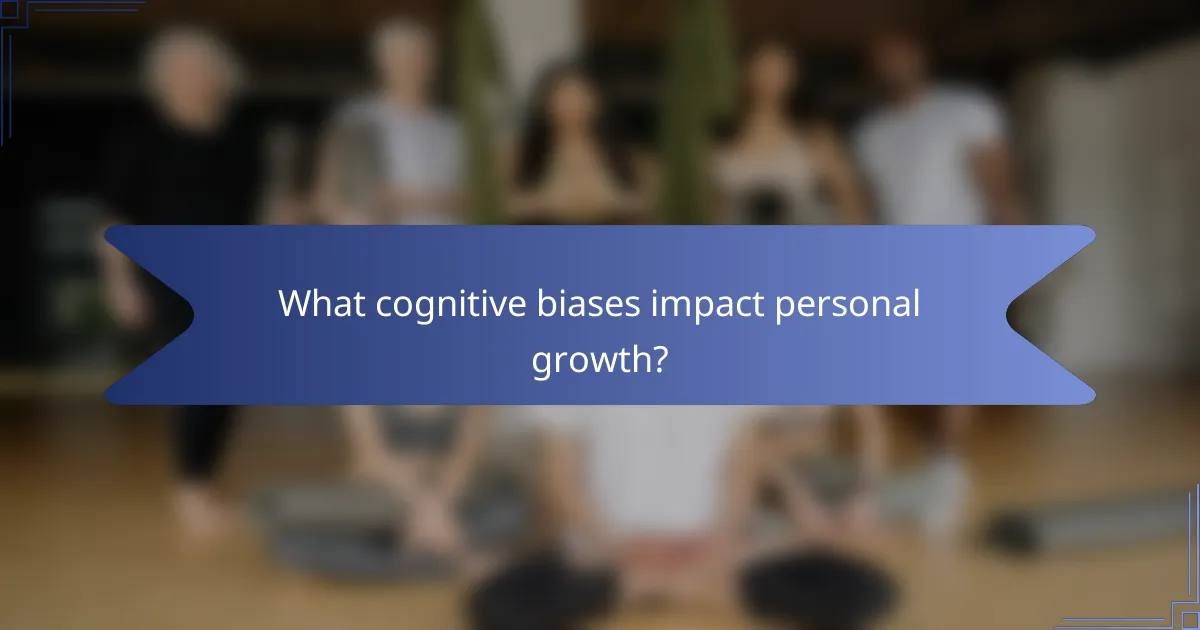
What cognitive biases impact personal growth?
Cognitive biases significantly hinder personal growth by distorting perception and decision-making. Key biases include confirmation bias, which leads individuals to favour information that confirms existing beliefs, and the Dunning-Kruger effect, where those with low ability overestimate their competence. These biases create a cycle of ineffective behaviours, preventing meaningful change. Recognising and addressing these biases is essential for achieving personal growth.
How does the status quo bias hinder change?
Status quo bias significantly hinders change by reinforcing existing habits and beliefs. This cognitive bias leads individuals to prefer familiar routines over new alternatives, stalling personal growth. It creates a false sense of security, making people resistant to change despite potential benefits. As a result, the status quo bias limits adaptability and innovation, preventing the exploration of new opportunities.
What role does confirmation bias play in decision-making?
Confirmation bias significantly skews decision-making by favouring information that aligns with pre-existing beliefs. This cognitive bias leads individuals to disregard contradictory evidence, reinforcing ineffective patterns. As a result, personal growth is hindered, as the same decisions yield unchanged outcomes. Recognising and addressing confirmation bias is essential for effective decision-making and meaningful change.
How does the sunk cost fallacy affect our choices?
The sunk cost fallacy leads individuals to make irrational choices by continuing investments based on prior losses rather than future gains. This cognitive bias can hinder personal growth by perpetuating unproductive behaviours. For instance, a person may stay in a failing project simply because they have already invested time or money, despite evidence suggesting a change would be more beneficial. Recognising this fallacy is crucial for making informed decisions that align with personal goals and values.
What are examples of the sunk cost fallacy in everyday life?
Examples of the sunk cost fallacy in everyday life include continuing a failed project due to previous investments, staying in an unfulfilling relationship because of time spent, and maintaining a subscription service despite lack of use. These situations highlight how past commitments can cloud judgment, leading to poor decision-making. Recognising this cognitive bias is crucial for personal growth and making rational choices.
How can overconfidence bias limit self-improvement?
Overconfidence bias can significantly hinder self-improvement by creating a false sense of competence. This bias leads individuals to underestimate challenges and overestimate their abilities, resulting in stagnation. For instance, a person may repeatedly apply ineffective strategies, believing they will yield different outcomes. As a result, they miss opportunities for growth and learning. Acknowledging this bias is crucial for fostering a realistic self-assessment and adapting approaches for better results.
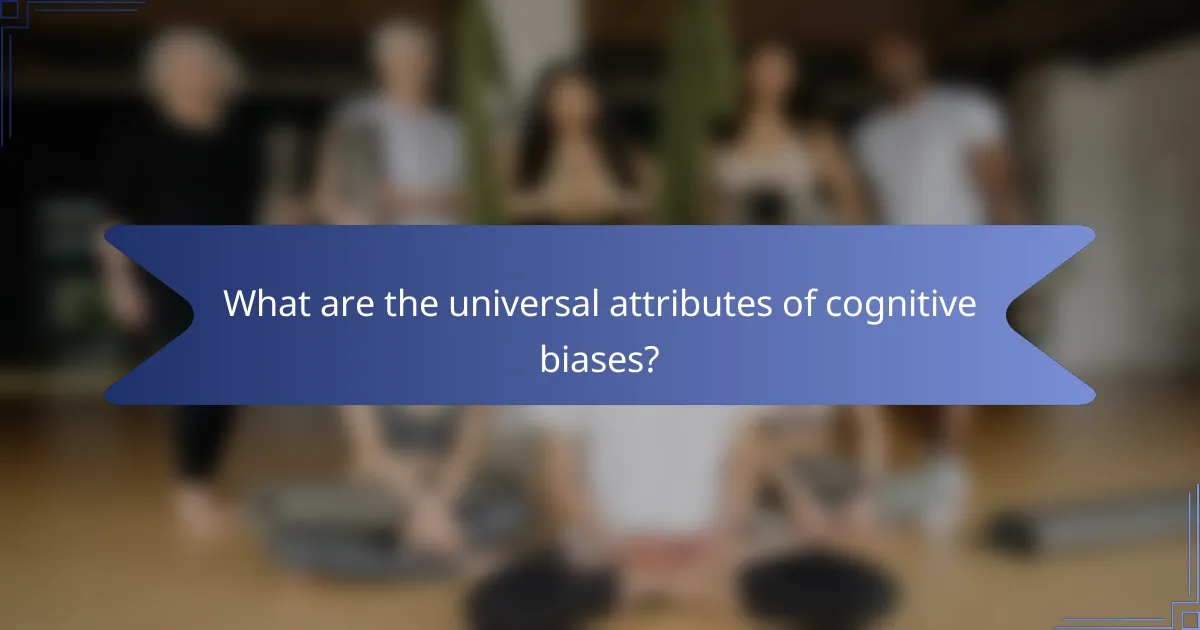
What are the universal attributes of cognitive biases?
Cognitive biases share universal attributes that impact decision-making. These include heuristics, emotional influences, and social factors. Heuristics simplify complex problems, leading to systematic errors. Emotional influences skew judgment based on feelings rather than facts. Social factors involve conformity and groupthink, affecting individual choices. Understanding these attributes fosters personal growth by promoting awareness of biases.
How do cognitive biases manifest in daily behaviours?
Cognitive biases significantly influence daily behaviours, often leading to repetitive actions despite negative outcomes. These biases, such as confirmation bias and anchoring, create mental shortcuts that hinder critical thinking. For example, individuals may ignore contradictory evidence while reinforcing existing beliefs, resulting in unchanging patterns. This can impede personal growth by maintaining the status quo, preventing the adoption of new strategies or perspectives. Recognising and addressing these biases is essential for fostering adaptability and enhancing decision-making skills.
What are the psychological mechanisms behind cognitive biases?
Cognitive biases arise from mental shortcuts that simplify decision-making but can distort reality. These mechanisms include heuristics, emotional influences, and social pressures, leading to flawed judgments. Understanding these biases promotes personal growth by fostering awareness and critical thinking.
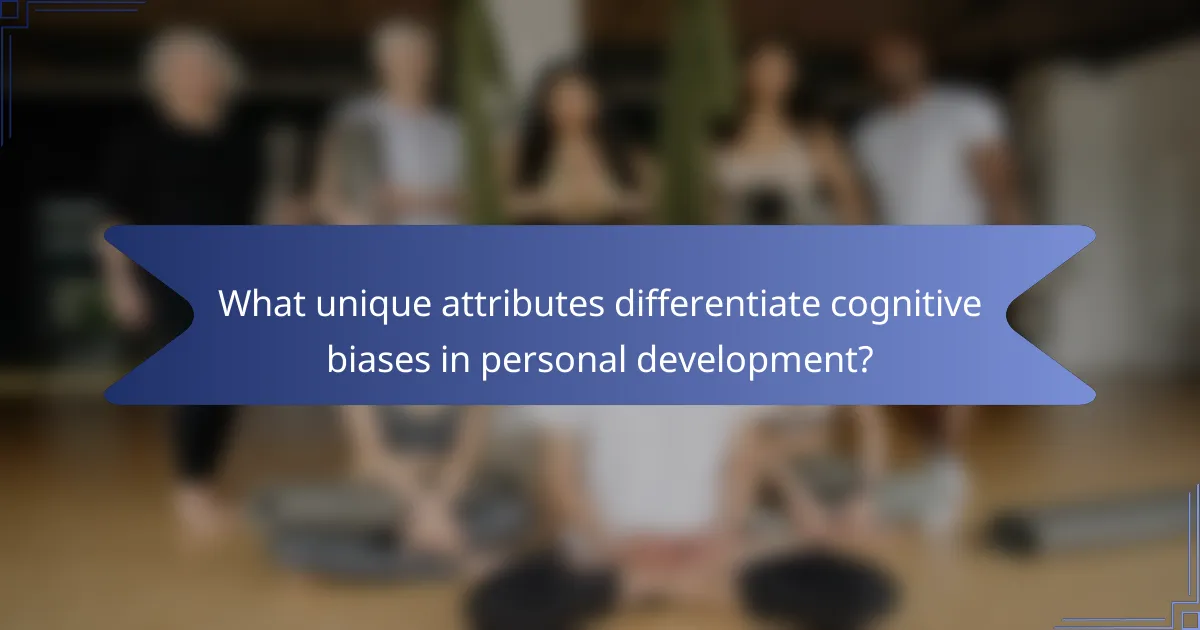
What unique attributes differentiate cognitive biases in personal development?
Cognitive biases in personal development are differentiated by their unique attributes, such as confirmation bias, which reinforces existing beliefs, and the Dunning-Kruger effect, where individuals overestimate their competence. These biases shape decision-making and hinder growth. Understanding these unique attributes allows individuals to recognise patterns that impede progress, fostering better strategies for personal development.
How do cognitive distortions specifically affect goal-setting?
Cognitive distortions hinder effective goal-setting by creating unrealistic expectations and negative self-perceptions. These biases can lead individuals to underestimate their abilities or overemphasise obstacles. For example, all-or-nothing thinking may cause someone to abandon goals if they encounter minor setbacks. As a result, recognising and addressing these distortions is crucial for achieving personal growth and setting realistic, attainable objectives.
What are the unique biases that arise in group settings?
Group settings often lead to unique biases that hinder personal growth. These include groupthink, where the desire for harmony suppresses dissenting opinions; social loafing, where individuals exert less effort in a group; and the bandwagon effect, where people adopt beliefs because others do. Each bias can stifle creativity and critical thinking, limiting the potential for effective problem-solving and decision-making. Understanding these biases is essential for fostering a more productive and innovative group dynamic.
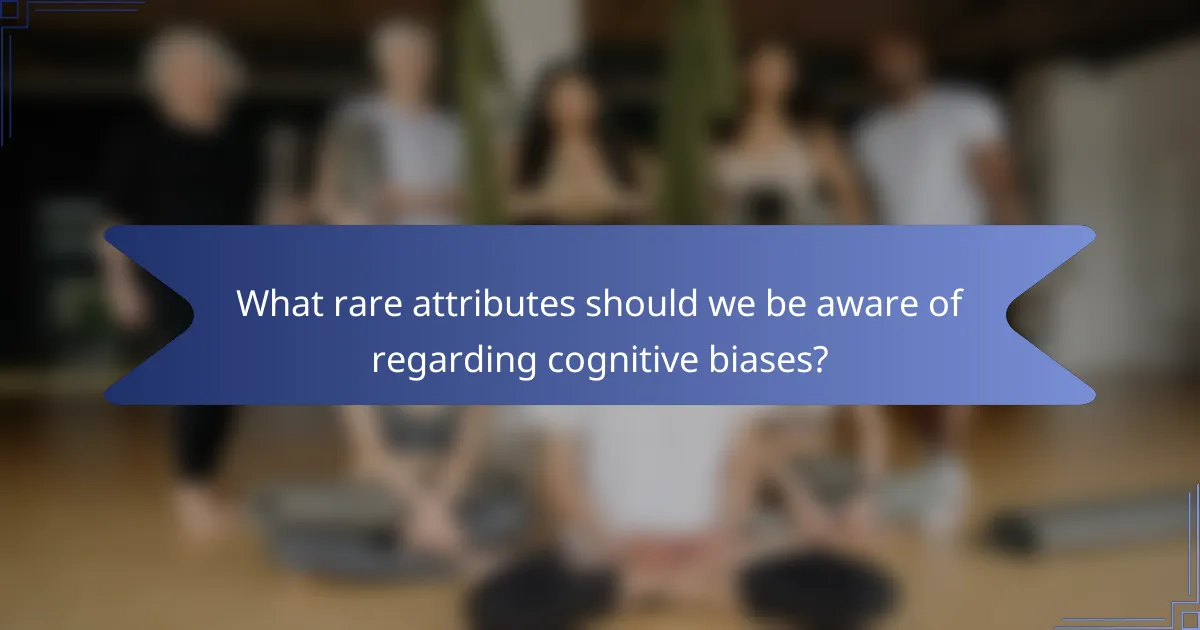
What rare attributes should we be aware of regarding cognitive biases?
Cognitive biases can exhibit rare attributes that significantly impact personal growth. One such rare attribute is the “illusion of control,” where individuals believe they can influence outcomes that are largely determined by chance. Another rare attribute is “optimism bias,” which leads people to underestimate risks and overestimate positive outcomes. Additionally, the “Dunning-Kruger effect” is a unique attribute where individuals with low ability overestimate their competence, hindering growth. Recognising these rare attributes can enhance self-awareness and promote better decision-making.
How can rare cognitive biases lead to unexpected outcomes?
Rare cognitive biases can lead to unexpected outcomes by distorting perception and decision-making. These biases, such as the Dunning-Kruger effect or the optimism bias, can cause individuals to overestimate their abilities or underestimate risks. As a result, they may repeat ineffective strategies, hoping for different results. This cycle hinders personal growth and reinforces negative patterns. Understanding these biases is crucial for fostering self-awareness and making informed choices. By recognising and addressing these rare biases, individuals can break free from unproductive behaviours and achieve better outcomes.
What are the implications of cognitive biases on long-term personal growth?
Cognitive biases hinder long-term personal growth by distorting perceptions and limiting decision-making. These biases lead individuals to repeat ineffective behaviours, expecting different outcomes, which stunts progress. Recognising biases such as confirmation bias and the Dunning-Kruger effect can empower individuals to adjust their strategies, fostering meaningful development. As a result, overcoming cognitive biases is essential for achieving sustained personal growth.
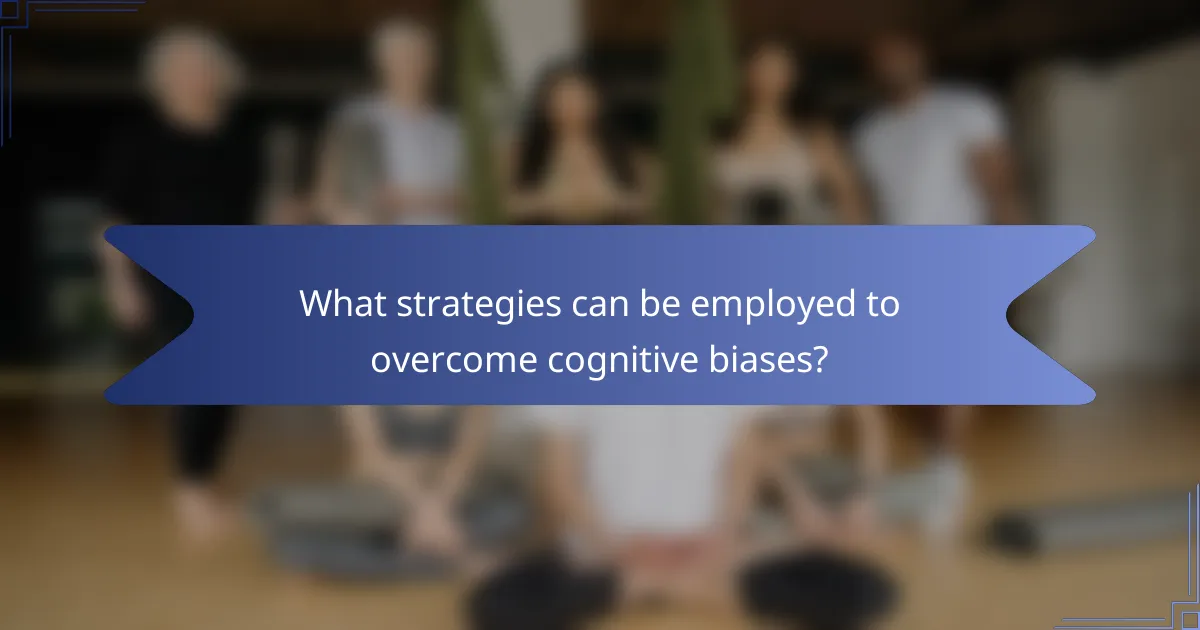
What strategies can be employed to overcome cognitive biases?
To overcome cognitive biases, individuals can employ strategies such as seeking diverse perspectives, practising mindfulness, and using structured decision-making processes. These approaches help challenge ingrained thought patterns and promote more rational thinking.
Seeking diverse perspectives allows for a broader understanding and mitigates confirmation bias. Mindfulness practices enhance self-awareness, enabling individuals to recognise biases as they occur. Structured decision-making processes, such as pros and cons lists, provide clarity and reduce emotional influences on choices.
How can self-awareness enhance personal development?
Self-awareness significantly enhances personal development by enabling individuals to recognise and challenge cognitive biases. This recognition fosters better decision-making and promotes growth. By understanding one’s thought patterns, individuals can break free from unproductive behaviours, ultimately leading to improved outcomes.
What practical exercises can help mitigate cognitive biases?
Practical exercises to mitigate cognitive biases include mindfulness meditation, perspective-taking, and structured decision-making. Mindfulness meditation enhances awareness of thoughts, reducing bias influence. Perspective-taking involves considering alternative viewpoints, fostering empathy and critical thinking. Structured decision-making uses frameworks to evaluate options systematically, minimising emotional biases.
What are the steps to implement cognitive restructuring?
To implement cognitive restructuring, follow these steps: identify negative thoughts, challenge their validity, replace them with balanced thoughts, and practice these new thoughts regularly. This process helps in overcoming cognitive biases that hinder personal growth.
What common mistakes do individuals make when addressing cognitive biases?
Individuals often fail to recognise their cognitive biases, leading to repeated poor decisions. Common mistakes include ignoring feedback, relying on anecdotal evidence, and overconfidence in personal judgment. They may also struggle with confirmation bias, seeking only information that supports existing beliefs. Additionally, a lack of awareness about emotional influences can hinder objective decision-making. Recognising these pitfalls is crucial for personal growth and effective change.
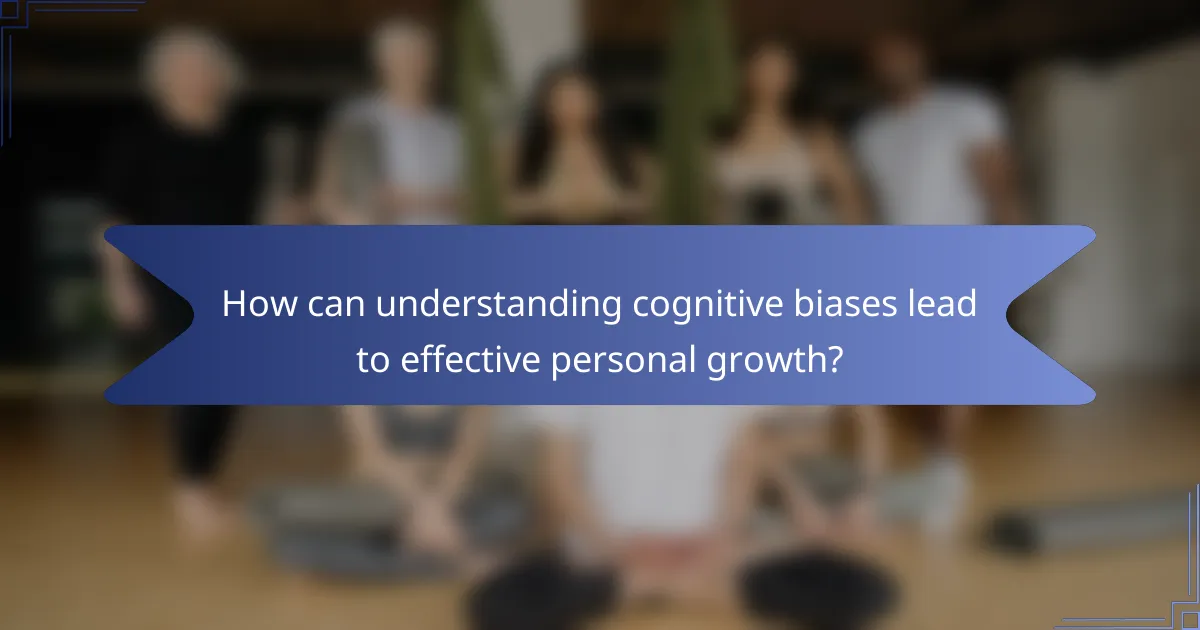
How can understanding cognitive biases lead to effective personal growth?
Understanding cognitive biases enables individuals to recognise and alter ineffective patterns, fostering personal growth. By identifying biases, such as confirmation bias or the Dunning-Kruger effect, one can make informed decisions and embrace change. This awareness promotes adaptability, enhancing problem-solving skills and emotional intelligence. Consequently, individuals can break free from unproductive habits, leading to improved outcomes in various aspects of life.
What are best practices for applying cognitive bias knowledge in personal development?
To effectively apply cognitive bias knowledge in personal development, focus on recognising and mitigating biases. Start by identifying common biases, such as confirmation bias or the Dunning-Kruger effect, which can hinder growth. Implement strategies like seeking diverse perspectives and questioning assumptions to foster critical thinking. Regular self-reflection enhances awareness of biases and promotes informed decision-making. Finally, set measurable goals to track progress and adjust strategies accordingly.
How can one create a feedback loop for continuous improvement?
To create a feedback loop for continuous improvement, establish a systematic process for gathering, analysing, and implementing feedback. Start by soliciting input from relevant stakeholders. Analyse this feedback to identify patterns and areas for growth. Implement changes based on the insights gained, then monitor the outcomes to assess effectiveness. Repeat this cycle regularly to foster ongoing development and adaptation.